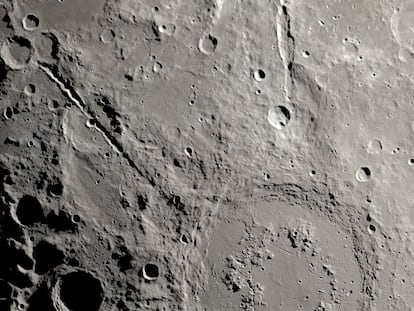This is how the eclipse looked from space
A European Meteosat satellite and another from the U.S. NOAA captured images of the Moon’s shadow projected over the areas where the partial solar eclipse was visible on Saturday, March 29
After the emotions stirred by Saturday’s partial solar eclipse, especially across both sides of the Atlantic, we now turn to the objective images captured by meteorological satellites. What we saw in the sky versus what actually happened. The European Organization for the Exploitation of Meteorological Satellites (EUMETSAT) has released photos of Earth taken by its advanced satellite, Meteosat-12, which orbits in geostationary space nearly 23,000 miles above sea level. From this vantage point, it moves in sync with Earth’s rotation, always capturing the same fixed view of the planet, centered on Africa and Europe.
While Western Europe witnessed the partial eclipse as a “bite” out of the Sun around noon, the satellite images from space reveal the true picture: a shadow sweeping across the Northern Hemisphere, most intense in the region where the eclipse reached its peak magnitude, between northeastern Canada and Greenland.
Eclipses occur roughly every six months when the Sun and Moon align. In this case, they were nearly in perfect alignment, but not quite — explaining why the March 29, 2025, eclipse was only partial and not total. The Moon’s umbra — the darkest part of its shadow — did not reach Earth. Instead, it was the penumbra, the lighter outer shadow, that was projected over the visible areas of the eclipse: the North Atlantic Ocean, northwestern Africa, most of Europe, the far eastern United States, much of the Arctic, and northernmost Russia.
The U.S. National Oceanic and Atmospheric Administration’s geostationary satellite, GOES-16, captured the event from a different perspective, focused on the Americas. In this frame, a much darker shadow dominated: that of the Earth itself, signaling the onset of night. The Moon’s penumbra overlapped with this shadow across much of eastern North America, meaning the eclipse was not visible there during the night. In some areas, like New York, only the final phase of the phenomenon was visible after dawn.
However, in the northeastern U.S. and eastern Canada, a few fortunate regions experienced a very eclipsed sunrise. A double sunrise could be seen at the point of maximum eclipse — located northwest of Quebec — where the partial eclipse reached a magnitude of 94%, just six minutes after sunrise. Meanwhile, in mainland Spain, it took place at 11:47 a.m., and the eclipse covered about a third of the Sun’s disk. This was enough to thrill millions of people who ventured out to witness the event on Saturday morning.
Sign up for our weekly newsletter to get more English-language news coverage from EL PAÍS USA Edition

